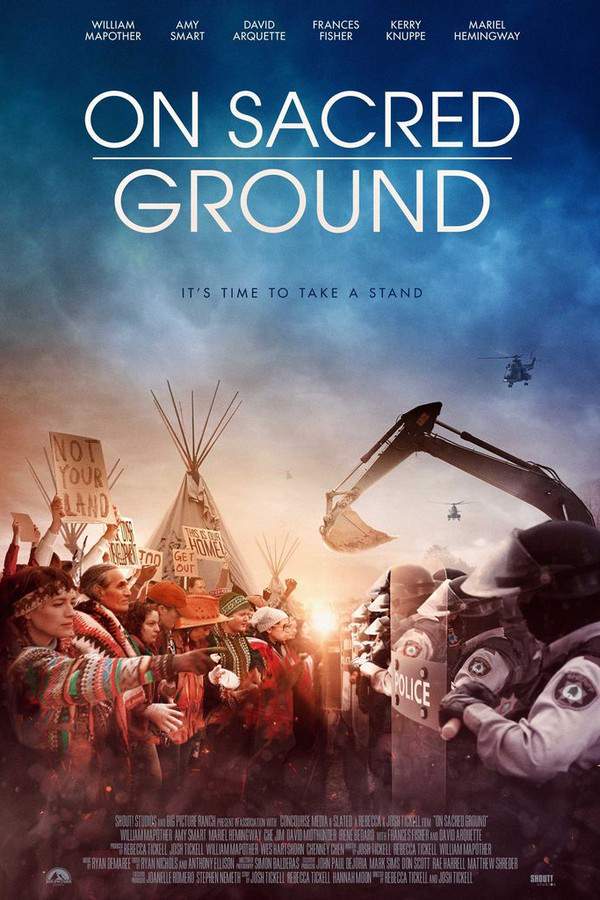
Lakota Woman: Siege at Wounded Knee
Year: 1994
Runtime: 100 mins
Language: English
Director: Frank Pierson
Mary Crow Dog, raised in a destitute Lakota family on the Pine Ridge Reservation in South Dakota, becomes drawn into the 1960s protest movement. Witnessing systemic oppression, she joins her people’s fight for sovereignty, culminating in the 1973 armed standoff at Wounded Knee, the site of the 1890 massacre.
Warning: spoilers below!
Haven’t seen Lakota Woman: Siege at Wounded Knee yet? This summary contains major spoilers. Bookmark the page, watch the movie, and come back for the full breakdown. If you're ready, scroll on and relive the story!
Timeline – Lakota Woman: Siege at Wounded Knee (1994)
Trace every key event in Lakota Woman: Siege at Wounded Knee (1994) with our detailed, chronological timeline. Perfect for unpacking nonlinear stories, spotting hidden connections, and understanding how each scene builds toward the film’s climax. Whether you're revisiting or decoding for the first time, this timeline gives you the full picture.
Last Updated: October 09, 2025 at 12:37
Unlock the Full Story of Lakota Woman: Siege at Wounded Knee
Don't stop at just watching — explore Lakota Woman: Siege at Wounded Knee in full detail. From the complete plot summary and scene-by-scene timeline to character breakdowns, thematic analysis, and a deep dive into the ending — every page helps you truly understand what Lakota Woman: Siege at Wounded Knee is all about. Plus, discover what's next after the movie.
Lakota Woman: Siege at Wounded Knee Summary
Read a complete plot summary of Lakota Woman: Siege at Wounded Knee, including all key story points, character arcs, and turning points. This in-depth recap is ideal for understanding the narrative structure or reviewing what happened in the movie.

Characters, Settings & Themes in Lakota Woman: Siege at Wounded Knee
Discover the characters, locations, and core themes that shape Lakota Woman: Siege at Wounded Knee. Get insights into symbolic elements, setting significance, and deeper narrative meaning — ideal for thematic analysis and movie breakdowns.

Similar Movies to Lakota Woman: Siege at Wounded Knee
Discover movies like Lakota Woman: Siege at Wounded Knee that share similar genres, themes, and storytelling elements. Whether you’re drawn to the atmosphere, character arcs, or plot structure, these curated recommendations will help you explore more films you’ll love.
Explore More About Movie Lakota Woman: Siege at Wounded Knee
Lakota Woman: Siege at Wounded Knee (1994) Plot Summary & Movie Recap
Lakota Woman: Siege at Wounded Knee (1994) Scene-by-Scene Movie Timeline
Lakota Woman: Siege at Wounded Knee (1994) Spoiler-Free Summary & Key Flow
Movies Like Lakota Woman: Siege at Wounded Knee – Similar Titles You’ll Enjoy
Lakota Nation vs. United States (2023) Full Summary & Key Details
Woman Walks Ahead (2018) Detailed Story Recap
On Sacred Ground (2023) Plot Summary & Ending Explained
Bury My Heart at Wounded Knee (2007) Story Summary & Characters
Son of the Morning Star (1000) Complete Plot Breakdown
The Legend of Walks Far Woman (1980) Full Summary & Key Details
Powwow Highway (1989) Plot Summary & Ending Explained
Battle of Little Bighorn (2020) Complete Plot Breakdown
Sioux City (1994) Spoiler-Packed Plot Recap
Cheyenne Warrior (1994) Complete Plot Breakdown
The Great Sioux Uprising (1953) Movie Recap & Themes
The Great Sioux Massacre (1965) Full Summary & Key Details
Stolen Women, Captured Hearts (1997) Plot Summary & Ending Explained
UnBowed (1999) Plot Summary & Ending Explained
Chief Crazy Horse (1955) Detailed Story Recap

















